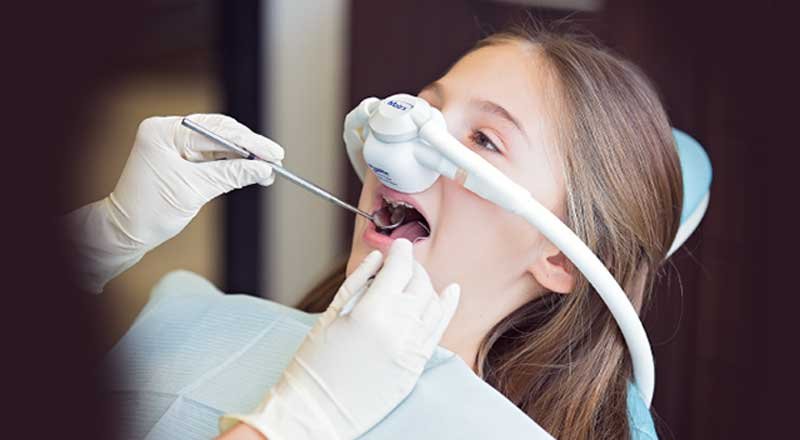Frequently Asked Questions
Indiadens is a child-friendly dental clinic with dentists who generally prefer to keep the first dental visit with little or no treatment. We intend to build a trusting rapport with the child first and help him build a basic dental orientation with us. Our clinic is also dedicated to help young patients overcome dental anxiety by using conscious sedation during the treatment, if required.
Usually on the first visit to Indiadens, the parents are educated about proper gum and teeth care for their child and the correct brushing/gum cleaning techniques so that they can further guide their child. Topics like appropriate nutrition and tooth-friendly snacks and meals for toddlers or little kids are also discussed at Indiadens. Many parents also have other concerns around things like feeders and pacifiers, which can be sorted out during this initial visit. The advice from dentists about teeth and gums can be important for future cavity prevention.
For the dental examination, the parents might be asked to first sit on the dental chair and show their kids that it’s not scary. They can also be asked to sit on the chair with the child on their lap. We then actively detect existing problems, if any, like cavities, teeth alignment or your child’s bite. We also check the current status of oral health, gum and jaw position, or any other possible developmental flaw. If necessary, we clean your child’s teeth and provide a fluoride application on the teeth as a prevention program for tooth decay.
Our dentists are dedicated to helping young patients to overcome dental anxiety. In spite of our best efforts, kids can develop a fear of the unknown environment and people, white coat phobia, needle phobia, etc. Indiadens is equipped with the provision of ‘inhalation sedation’ (nitrous oxide and oxygen inhalation). The AAPD (AMERICAN ASSOCIATION OF PEDIATRIC DENTISTRY) recognizes it as a safe and effective technique to reduce anxiety and enhance effective communication between the child and the dentist. This makes the child relaxed and comfortable to carry out dental procedures.
If you think inhalation sedation will be beneficial to your child, you could read more about the process by clicking here.
The best way to ensure a pleasant and successful first dental visit is to take a little time to prepare your child and set expectations about what will happen. Simply follow the following guidelines to avoid the jitters associated with the first dental visit.
- Start with having a positive attitude yourself. Children are amazingly perceptive when it comes to the attitudes of others, and they will mirror your reactions to the situation. Make sure you are calm, relaxed, and cheerful. Even if you are not a huge fan of the dentist, don’t let it show in front of your kid. Try to avoid talking about any bad experience at the dental clinic. Always chat about the dentist in positive terms. When you enter our clinic, interact as politely as you can with the staff here. Try to project the attitude that a dentist’s visit is fun, and that the dentist is a friend who is there to help.
- Talk to your child, in an age-appropriate way, about the sequence of events expected during the visit. For example, start by “First we’ll say hi to the receptionist, then we would have to wait a little while they get ready, then we’ll go into a little room and there will be a big chair…” When kids know what to expect, they are much more able to deal with each event as it happens.
- Create a ‘ritual’ surrounding the experience. For example, you could bring some of their favourite toys to play with or special books to read while in the waiting area. Or perhaps you can pick out a special “going to the dentist” outfit. These rituals will help build a routine for your child and he/she will start relating the dental visits to these
- Don’t forget to have them brush. The dental visit will go more smoothly if your child has already brushed their teeth before the visit. This makes it easier for the dentist to examine your kid’s teeth, and to see how well he or she is brushing. So, try to remember to have your child brush before heading out to the dentist!













